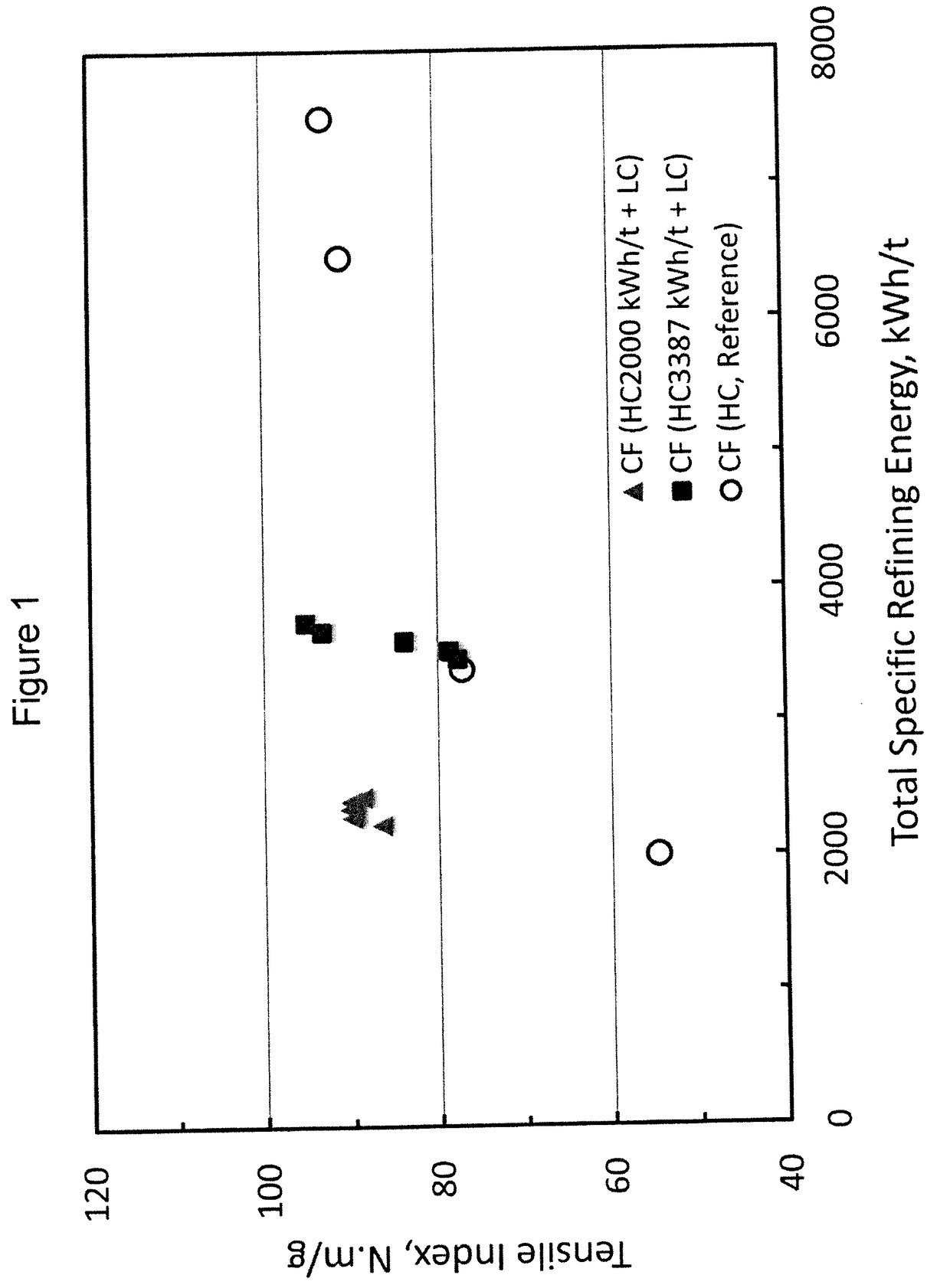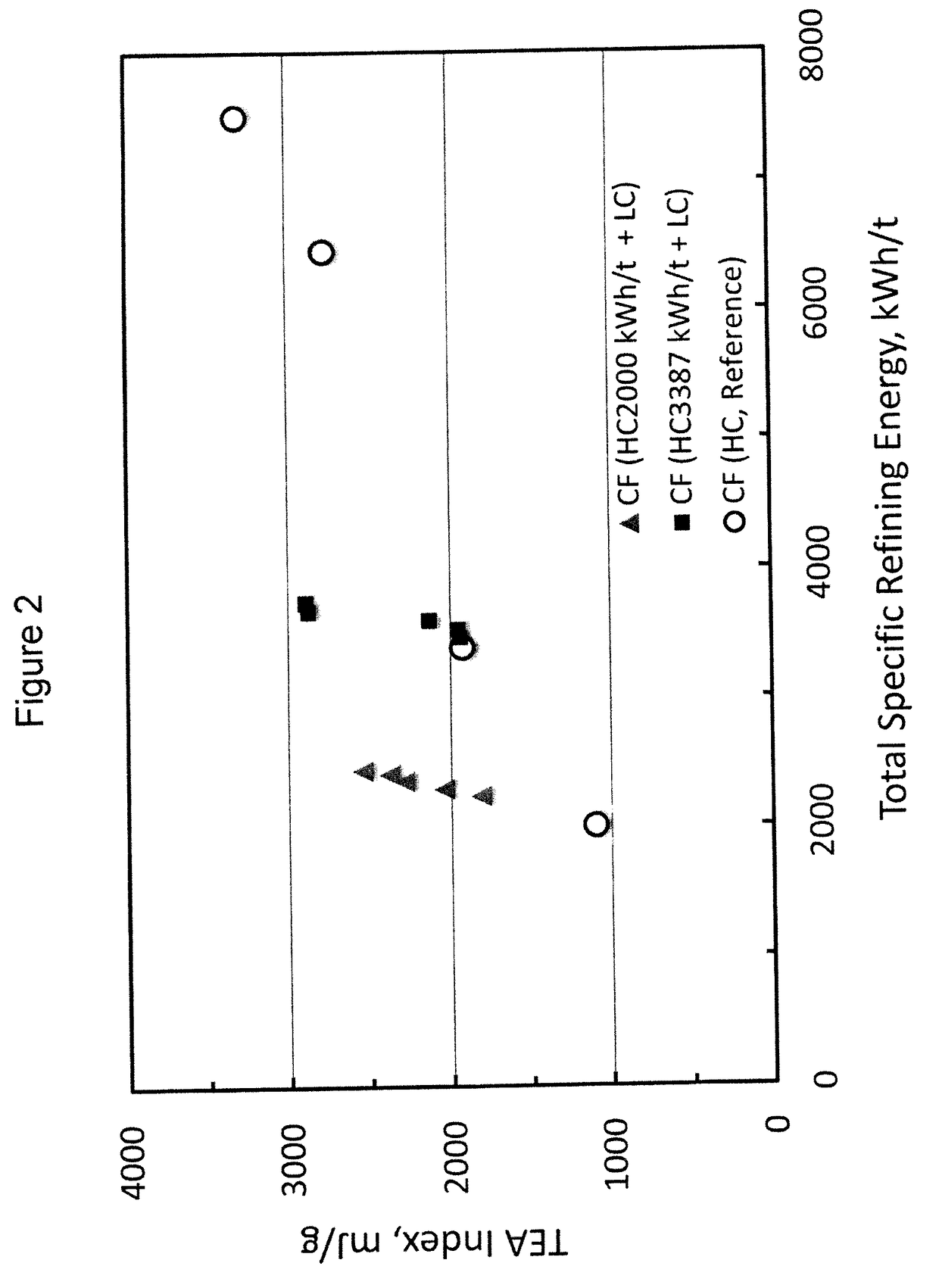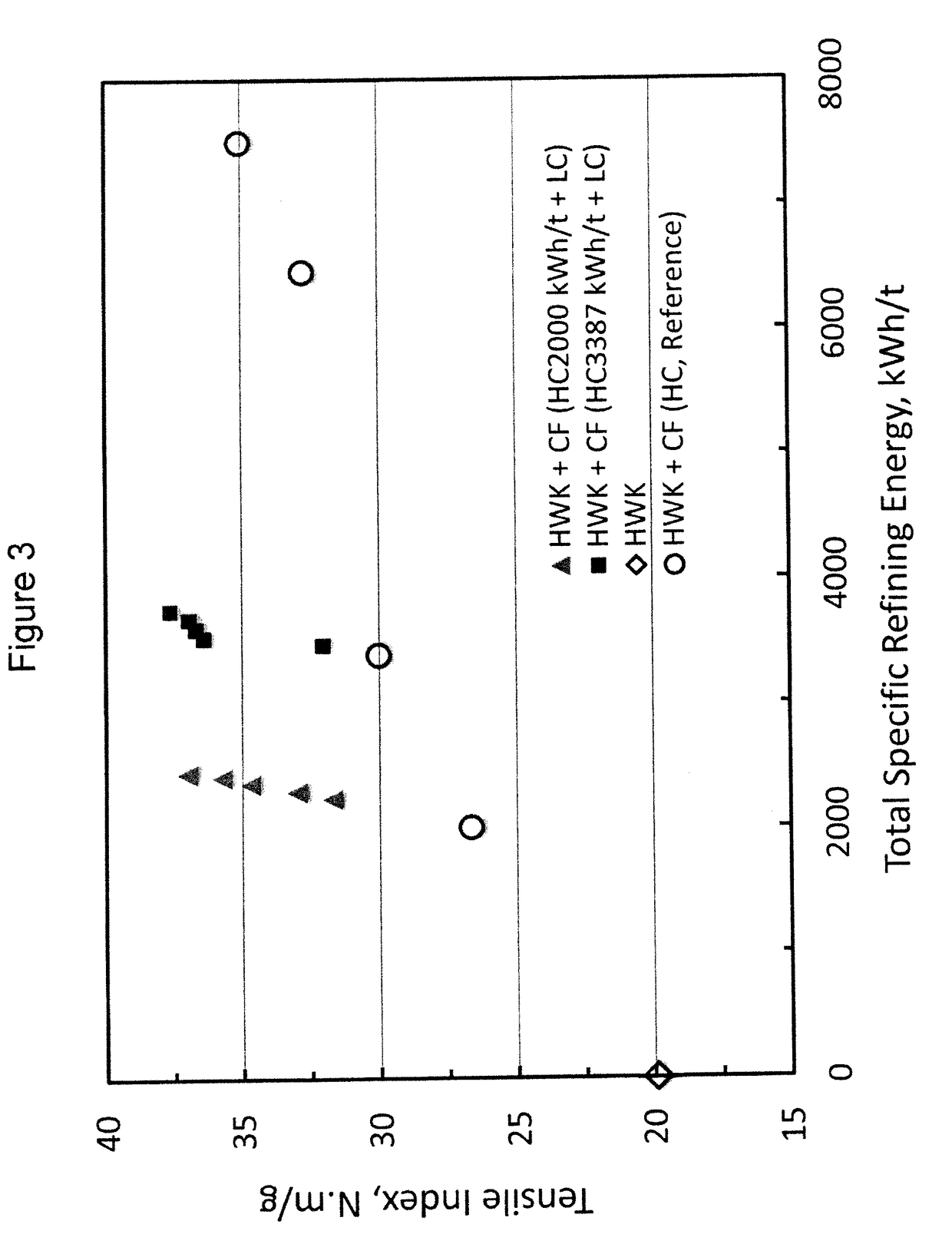Method for producing cellulose filaments with less refining energy
- Summary
- Abstract
- Description
- Claims
- Application Information
AI Technical Summary
Benefits of technology
Problems solved by technology
Method used
Image
Examples
example 1
[0070]One set of cellulose filaments (CF) was produced from a NBSK pulp by multi-pass, high consistency (30%) refining with a total specific refining energy of 2000, 3387, 6458 and 7500 (kWh / t), respectively, according to General Procedure A. Samples of the CF were dispersed in the lab according to General Procedure C. The CF is referred to as CF (HC, Reference).
[0071]One set of CF was produced from the NBSK pulp by multi-pass, high consistency (30%) refining with a total specific refining energy of 2000 kWh / t according to General Procedure A, followed by low consistency (3.2-3.6%) refining in a low consistency Conflo refiner with a total specific refining energy of 232-435 kWh / t according to General Procedure B. Samples of the CF were dispersed in the lab according to General Procedure C. The CF is referred to as CF (HC2000 kWh / t+LC).
[0072]One set of CF was produced from the NBSK pulp by multi-pass, high consistency (30%) refining with a total specific refining energy of 3387 kWh / t...
example 2
[0074]Handsheets (60 g / m2) from a bleached hardwood kraft (HWK) pulp and the CF (HC, Reference) from Example 1 at 90 / 10 weight (od basis) ratio of HWK / CF were prepared, and the tensile index and TEA index of the handsheets were measured according to General Procedure F.
[0075]Handsheets (60 g / m2) from the same HWK and the CF (HC2000 kWh / t+LC) from Example 1 at 90 / 10 weight (od basis) ratio of HWK / CF were also prepared, and the tensile index and TEA index of the handsheets were measured according to General Procedure F.
[0076]Handsheets (60 g / m2) from the same HWK and the CF (HC3387 kWh / t+LC) from Example 1 at 90 / 10 weight (od basis) ratio of HWK / CF were also prepared, and the tensile index and TEA index of the handsheets were measured according to General Procedure F.
[0077]In a separate experiment, handsheets (60 g / m2) from 100% HWK (without any CF) were also prepared, and the tensile index and TEA index of the handsheets were measured according to General Procedure F.
[0078]Table 2 li...
example 3
[0079]CF was produced from an NBSK pulp by multi-pass, high consistency (30%) refining with a total specific refining energy of 8298 kWh / t according to General Procedure A. A sample of the CF was dispersed in the lab according to General Procedure C and CF films (20 g / m2) were then prepared and their TEA index were measured according to General Procedure E.
[0080]Samples of the CF produced from the NBSK pulp by multi-pass, high consistency (30%) refining with a total specific refining energy of 8298 kWh / h according to General Procedure A, were subjected to low consistency, non-refining mechanical treatment at a consistency of 2% for various times (2 to 30 minutes) according to General Procedure D. CF films (20 g / m2) were then prepared and their TEA index were measured according to General Procedure E
[0081]Table 3 lists the TEA index of the films of CF produced using the multi-pass, high consistency refining of the NBSK pulp, and using the multi-pass high consistency refining of the N...
PUM
| Property | Measurement | Unit |
|---|---|---|
| Fraction | aaaaa | aaaaa |
| Fraction | aaaaa | aaaaa |
| Fraction | aaaaa | aaaaa |
Abstract
Description
Claims
Application Information
 Login to View More
Login to View More - R&D
- Intellectual Property
- Life Sciences
- Materials
- Tech Scout
- Unparalleled Data Quality
- Higher Quality Content
- 60% Fewer Hallucinations
Browse by: Latest US Patents, China's latest patents, Technical Efficacy Thesaurus, Application Domain, Technology Topic, Popular Technical Reports.
© 2025 PatSnap. All rights reserved.Legal|Privacy policy|Modern Slavery Act Transparency Statement|Sitemap|About US| Contact US: help@patsnap.com



